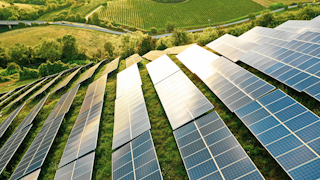Solar power plant construction requires a licence under the Energy Act if the developer or the local grid company needs to establish a high-voltage plant (voltage in excess of 1 kV) in order to feed the power into the grid. A licence is also required if the plant owner wants to establish low-voltage cables to neighbouring buildings for power sales purposes. We summarize the different steps in the licensing process as it is today.
The plants developed in Norway thus far have been below these thresholds, and have thus been exempted from the licensing requirement. However, the NVE granted its first licence for a solar power plant in Norway in May 2022. The Furuseth solar power plant will be the first onshore solar power plant in Norway when it is constructed in the municipality of Stor-Elvdal in the county of Innlandet. The power plant has been granted a licence to generate power corresponding to the consumption of more than 300 households, i.e., about 6.4 GWh.
Below is a summary of the different steps in the licensing process as it stands today. The NVE guidance is available in full here (in Norwegian).
- Pre-application project development: Before submitting a license application to NVE, it's important that landowner conditions are clarified. The developer must, among other things, secure the necessary landowner rights to the project area. Early contact with local and other relevant authorities, such as the municipality, County Council, and County Governor, is also recommended. Even though the construction license under the Energy Act is often seen as a framework permit for the power plant, other permits according to other regulations might also be required, in addition to clarifications with municipal plans.
Today's authorities have not adopted a requirement for the developer to draft a notification with a proposed study program for solar power, as is the case for hydropower and wind power. However, NVE still recommends that such a notice be prepared and submitted for larger solar projects in outlying areas. This notification should include a description of what will be built, a brief description of the expected consequences of the development, and a draft research program. Experience shows that early involvement of landowners, authorities, and local decision-makers will lead to more efficient processes and increased quality and relevance of impact assessments.
- Application and impact assessment: Before submitting a license application, the developer must ensure that impact assessments in accordance with the Impact Assessment Regulation have been carried out. The assessment should show all the consequences of the initiative for the environment and society. Both positive and negative effects of the measure should be described. The impact assessment should be attached to the license application. Furthermore, the application should contain a description of the proposed measure, including how any negative consequences can be mitigated.
- Application consultation round: After the application has been received, NVE will send the application for consultation to relevant hearing bodies. The application will also be made public in local newspapers so that interest groups and the general public can provide input. In some cases, public meetings might be organized. If, during the hearing, it becomes clear that the knowledge base is insufficient, NVE can request the developer to provide additional studies or supplementary information.
- The NVE’s evaluation and decision: NVE will then process the application based on the application, impact assessments, hearing statements, and their own expertise in solar power. The result of NVE's treatment can either grant a concession to build solar power or decline the application. Specific conditions for the permission will be determined in the construction concession. Further details are set out in the detailed plan.
- Administrative appeal processes: Anyone with a legitimate interest in appealing can appeal NVE's decision to the Ministry of Petroleum and Energy (OED) for a final decision.
- Conditions, follow-up, and supervision: The developer must prepare a detailed plan for the facility, describing the final construction solution for the solar power plant, all land interventions, and how landscape and environment will be preserved during the construction and operational phases. This detailed plan must be approved before construction can begin. NVE will monitor the construction and operational phases to ensure that conditions are met. In addition to the construction concession and approved detailed plan, it's also necessary to clarify the relationship with municipal plans, grid connection, and possibly obtain other public permits. Furthermore, the developer must secure the necessary private law rights before construction can begin. Especially important is the right to use land areas. If it is not possible to make agreements with all affected landowners, rights must be expropriated, and a legal assessment must be held for the determination of compensation.
Please do not hesitate to get in touch with us if you would like to know more about our role in facilitating solar energy and the opportunities available in this market.
Spotlight
Renewable energy projects towards 2030
Norway will need more renewable energy to succeed with the green shift and reach its target of reducing greenhouse gas emissions by 55 percent by 2030. We invite you to learn more about our role in making sure future renewable development projects are successful.
Read more




